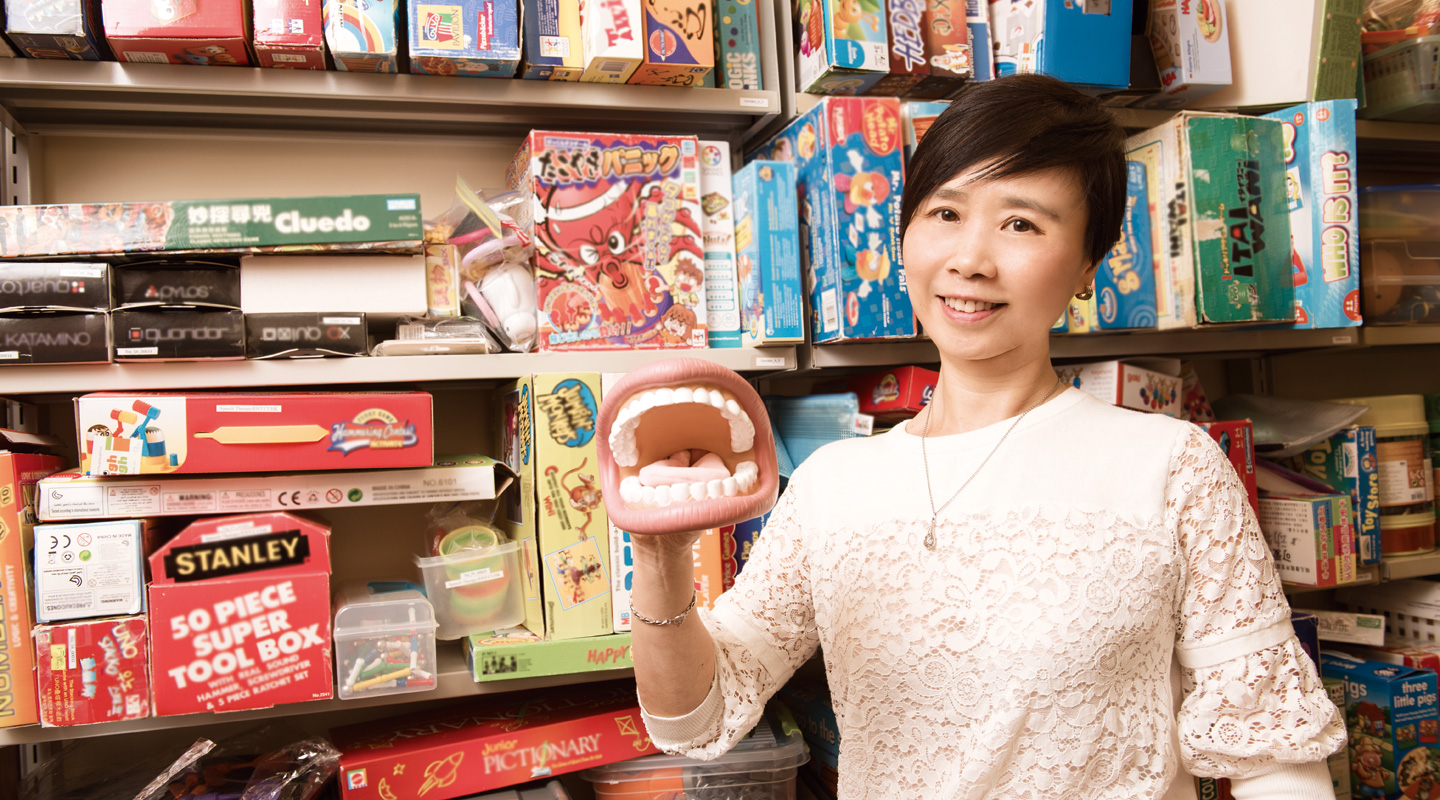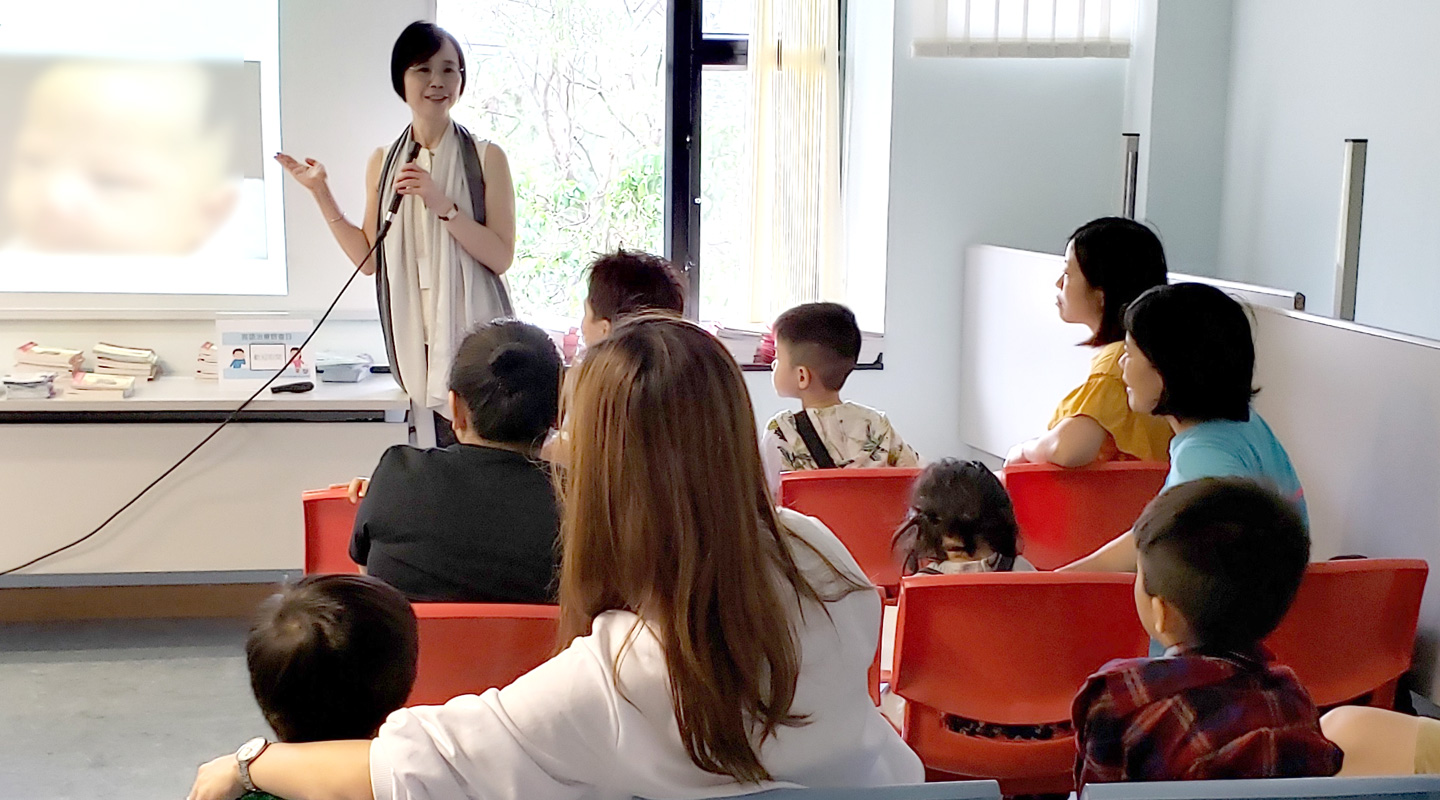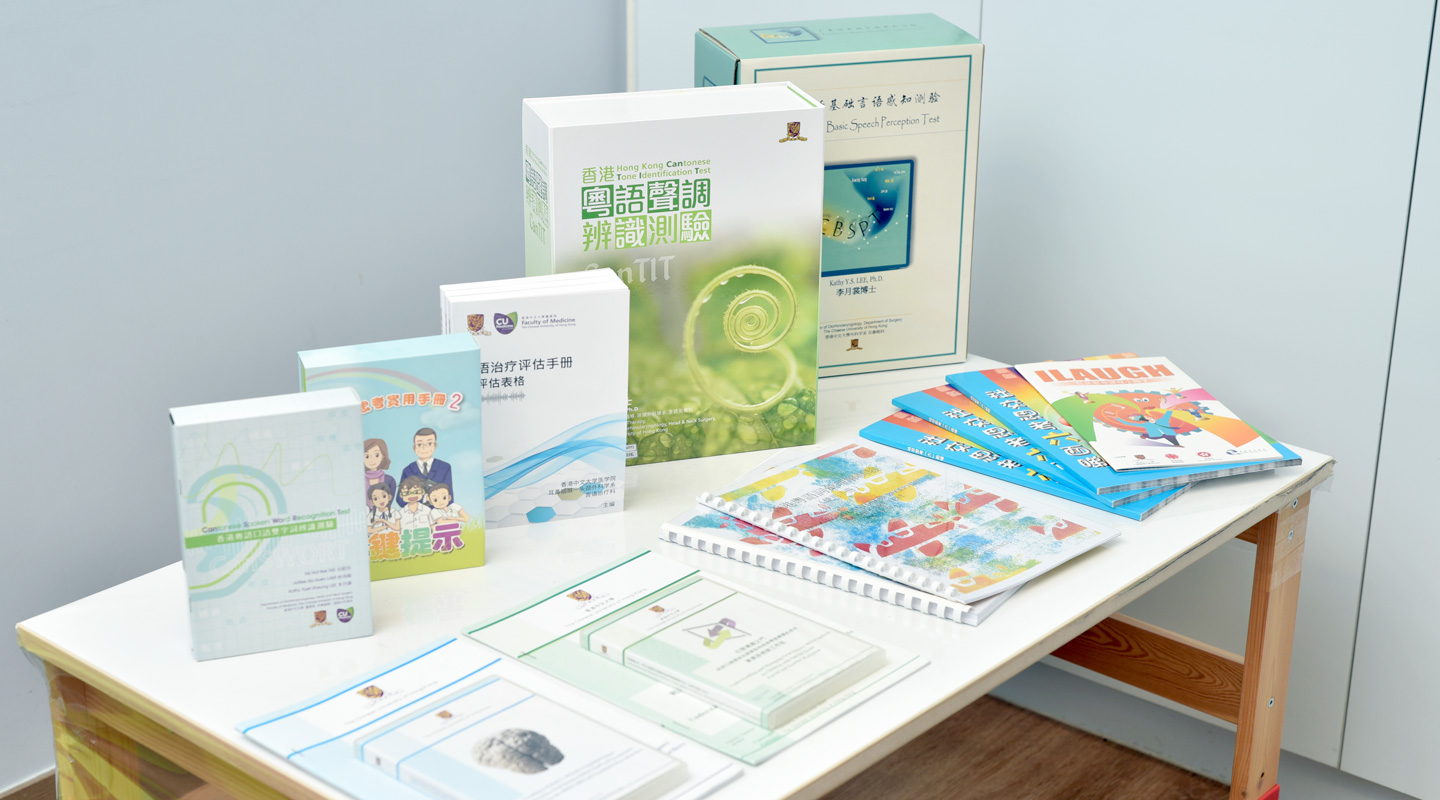Dear readers, With the launch of e-newsletter CUHK in Focus, CUHKUPDates has retired and this site will no longer be updated. To stay abreast of the University’s latest news, please go to https://focus.cuhk.edu.hk. Thank you.
Clearing of the Forest for Better Communication

When babies start babbling, most often the first word they utter is ‘ma’, which consists of a bilabial ‘m’ and a long vowel ‘a:’. To pronounce it, babies part their lips and lower their tongues, allowing air passage from the mouth. Uttering such a simple sound requires babies to coordinate different articulators and practise repeatedly. But innate and postnatal defects will impede this development. Accidents and diseases will also rob adults of this basic ability. A speech therapist’s job is to help tackle the different kinds of communication disorders.
In view of the soaring demand for speech therapists, the Division of Speech Therapy under the Department of Otorhinolaryngology, Head and Neck Surgery, Faculty of Medicine, launched a two-year full-time Master of Science in Speech-Language Pathology programme in September 2018 and admitted 30 students out of more than 300 applicants. The interdisciplinary programme with input of medicine, linguistics and electronic engineering covers six domains including language, speech, swallowing, fluency, voice and multi-modal communication.
‘1 + 2’ Study Mode
This postgraduate programme offered by CUHK distinguishes itself from its kinds with the ‘1+2’ study mode. Priority is given to applicants who have completed the one-year part-time Postgraduate Diploma Programme in Communication Disorders and Sciences. ‘The image of a speech therapist is so glamorous that many students are drawn to it. But the dropout rate is high around the globe because the stress is unbearable to many. We hope that our students could have a taste of the subject during their diploma study to decide whether they are really cut out to be speech therapists before enrolling in the full-time master’s programme,’ explained programme director Prof. Kathy Lee.

While e-learning and flipped classroom are used in theory classes, students must complete at least 300 hours of clinical practice handling Cantonese and Mandarin cases. ‘The edge of our programme is that students may choose the advanced clinical stream and gain experience in dealing with more complex cases such as craniofacial anomalies, high-functioning children with autism, hearing impairment, and conducting endoscopic examination of swallowing. Students could then have a comprehensive understanding of various communication disorders,’ said Professor Lee.
For example, a hearing-impaired person who has received cochlear implants will first learn to tell silence from sound, then to classify different levels of loudness and pitch, and lastly to identify speech sounds. For the elderly who have swallowing disorder, speech therapists would help them strengthen their tongue and throat muscles and improve their swallowing ability. This could free the elderly from the torment of using feeding tubes.
Speech therapists rely on assessment tools to conduct diagnosis. The Division of Speech Therapy has developed a number of computer-assisted assessment tools. For example, the Division cooperated with the Department of Electronic Engineering and the Department of Linguistics and Modern Languages in 2015 to develop the ‘Hong Kong Cantonese Tone Identification Test’ and the ‘Cantonese Spoken Word Recognition Test’, which assess tone perception ability and word recognition ability, respectively. Based on the test results, speech therapists can figure out the type and the degree of communication disorders. Students will be taught to use these tools in the programme.

Objective Structured Clinical Examination
When it comes to exams, the programme under the Faculty of Medicine adopts objective structured clinical examination (OSCE) which is commonly used in medical licensing examination. Students are required to go through 10 OSCE stations. In each station, students are assessed on one clinical skill, e.g., diagnosis or treatment, after examining simulated patients or watching video clips.
Speech therapists are in short supply globally. In the US the ratio of speech therapists to population is 1:2,290. In Hong Kong, the ratio is 1:20,000. In mainland China, it is 1:1.3 million. The Hong Kong Government is creating school-based speech therapist posts for primary and secondary schools from 2019–20 on. Every two schools could hire one speech therapist. If such measure is implemented by a total of around 1,000 schools in the city, about 500 vacancies will need to be filled. On the other hand, in the 2018–19 Budget, the Government proposed to provide speech therapy services for elderly service units. All these are evidence of the surging demand for speech therapy services from different sectors.
From children to the elderly, from language disorder to dysphagia, service receivers and their problems may come in different forms, but one thing remains the same: finding cure is a long way to go. Speech therapists need to have abundant patience and flexibility to adjust treatments based on service receivers’ particular conditions, and foster trust with them and even with their family members. It’s an arduous journey, but also the reason why speech therapists are worth their salt.
M. Mak
This article was originally published in No. 534, Newsletter in Mar 2019.